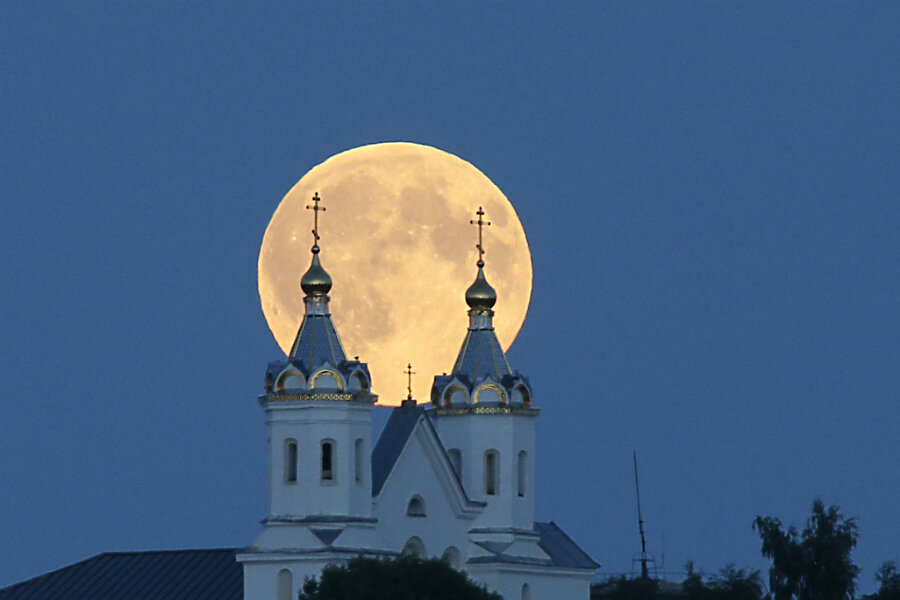Supermoon lunar eclipse to occur this month: Who will see it best?
Loading...
Sky gazers will be treated to a colorful cosmic show this fall.
On September 27, the moon will reach its full phase while also nearing its closest point to Earth in its orbit, creating views of a "supermoon."
A supermoon happens when the moon reaches its peak while it is at the closest possible distance to the earth, making the moon’s diameter appear around 14 per cent bigger and can look up to 30% brighter than usual, according to NASA.
Full moons vary in size because of the oval shape of the Moon's orbit. As the moon travels its elliptical path around Earth, it gets about 30,000 miles closer at perigee than at its farthest extreme, apogee. Full moons close to perigee seem extra big and bright.
"In practice, it's not always easy to tell the difference between a supermoon and an ordinary full moon," NASA says. "A 30 percent difference in brightness can easily be masked by clouds and haze. Also, there are no rulers floating in the sky to measure lunar diameters. Hanging high overhead with no reference points to provide a sense of scale, one full Moon looks about the same size as any other."
But this September’s supermoon will be a special one. It will also coincide with a lunar eclipse, making it a supermoon lunar eclipse – an event that has happened just five times since 1910. The last time the two events converged was in 1982 and the next time will be 2033, NASA officials said in a video.
The eclipse will last for over 3 hours.
During a total lunar eclipse, the sun, earth, and moon form a straight line. The earth blocks any direct sunlight from reaching the moon. “But the moon doesn't go completely dark during total eclipses; rather, it often turns a reddish hue because it's hit by sunlight bent by Earth's atmosphere. For this reason, total lunar eclipses are often referred to as 'blood moons,'" Space.com explains.
The eclipse will begin after sunset and will be visible from most of North America, South America, Europe, West Asia, and parts of Africa, according to Timeanddate.com.
Weather permitting sky gazers in the US will literally have front row seats – they will be treated to a striking sky show.
“People on the US East Coast and parts of Central United States will have some of the best views of the Eclipse, which will occur after moonrise and before local midnight (00:00 on September 28). At some locations in the Eastern US, the last stages of the Eclipse will occur after midnight on September 28,” Timeanddate.com notes.
Mark your calendar for September 27 and enjoy the supermoon lunar eclipse.







